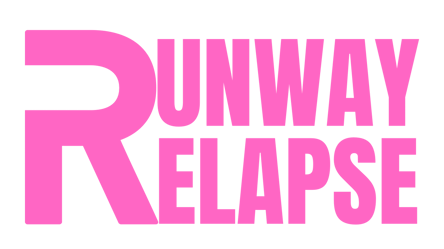Magicians of the Midwest
Exploring Chicago's Artistic Oasis for Queer and POC Creatives
3/12/20254 min read


Chicago has long been a city that nurtures creativity, a place where diverse artistic expressions have flourished alongside its rapid industrial growth. From the iconic Chicago School of Architecture to the vibrant underground art movements of the 20th century, the city’s creative identity has evolved in parallel with its social and cultural shifts. Today, the city stands as a beacon for progressive and inclusive artistry, where marginalized communities, particularly queer and POC (people of color) artists, continue to challenge the status quo and shape the city’s dynamic cultural landscape.
Artistic Foundations: A Legacy of Innovation
The roots of Chicago’s creative community stretch back to the late 19th century, when the city became a cultural hub amid its transformation into an industrial powerhouse. A major turning point came in 1893 with the World’s Columbian Exposition, which showcased groundbreaking works of art and architecture, placing Chicago on the map as a center of creative innovation.
The early 20th century saw the rise of the Chicago School of Architecture, which not only shaped the city’s distinctive skyline but also fostered an environment conducive to creative experimentation. This period laid the groundwork for the art movements that would define the city in the decades to come, including the emergence of groups like the Chicago Imagists. These artists blurred the lines between pop culture, surrealism, and personal expression, often using humor and rebellion to challenge conventional norms and provide a platform for marginalized voices.
The Rise of "Radical" Movements: Empowering Queer and POC Voices
By the mid-20th century, the city’s creative community had become synonymous with innovation, driven in large part by the emergence of the Studio Movement, which emphasized personal expression and collective collaboration. These artist-run collectives became a vital force for promoting diversity and creating space for voices that were often excluded from mainstream art circles.
In the 1960s and 70s, Chicago’s Afro-American artists’ movement provided a platform for POC artists to reclaim their narratives and assert their cultural identities in an art world that had long overlooked them. At the same time, the city embraced queer artistry, with spaces like the Chicago Cultural Center offering safe havens for LGBTQ+ creatives to explore themes often marginalized by traditional galleries and institutions.
As the cultural fabric of the city continued to evolve, it became clear that Chicago had carved out a distinct identity. By embracing radical movements and championing the voices of marginalized communities, the Windy City has emerged as a powerful alternative to art hubs like New York, Los Angeles, and Miami.
The Power of Community: Cultivating Inclusivity and Collaboration
In Chicago, community-driven art collectives play a critical role in fostering an inclusive and supportive environment for queer and POC artists. These collectives provide safe spaces for artistic exploration, collaboration, and expression, dismantling the barriers that often hinder marginalized voices in the art world.
One standout collective is The Arts of Life, which integrates artists with and without disabilities, celebrating diversity and the transformative power of collaboration. Through workshops, exhibitions, and collaborative projects, the collective encourages individual expression while reinforcing the sense of community that lies at the heart of the city’s creative ecosystem.
Similarly, initiatives like My Block, My Hood, My City focus on amplifying local narratives and personal stories, allowing queer and POC artists to reflect their unique experiences. These projects highlight the importance of representation and inclusivity, ensuring that underrepresented voices are not only heard but celebrated.
The growing prominence of these collectives has sparked a ripple effect, inspiring artists to engage in collaborative practices that elevate their work and contribute to a broader cultural dialogue. The sense of unity within these communities empowers queer and POC creatives to break through the limitations of the mainstream art world and reshape the artistic landscape.
Navigating Challenges: Resilience in the Face of Adversity
Despite its rich history and thriving creative environment, Chicago’s art scene has not been without its challenges. Queer and POC artists continue to face significant barriers, including funding disparities, limited visibility, and institutional biases that exclude their work from major galleries and exhibitions.
One of the most pressing challenges is the lack of financial support. Many queer and POC artists struggle to secure grants, residencies, or sponsorships, which limits their ability to showcase their work. This lack of access to funding often results in fewer opportunities for emerging artists to gain recognition in mainstream spaces.
Galleries, which tend to focus on established artists, often overlook new talent, particularly from marginalized communities. This lack of visibility stifles innovation and perpetuates stereotypes, as mainstream art spaces may fail to represent the full spectrum of experiences that these artists bring to the table.
Nevertheless, queer and POC artists remain resilient, using their experiences to fuel their creative practices. In response to these challenges, many have turned to community-driven galleries and cooperative spaces, where they can collaborate and uplift one another. These initiatives are essential for fostering an inclusive environment that not only provides visibility but also enables artists to engage with one another and grow their networks.
A Glimpse into the Future: Redefining the Art World
As the Windy City’s creative community continues to evolve, there is a palpable sense of excitement among queer and POC creatives who are at the forefront of this transformation. Emerging trends show a growing focus on inclusivity, intersectionality, and representation, with artists drawing upon their lived experiences to inform their work and challenge dominant narratives.
The integration of technology and social media has played a pivotal role in this shift, allowing artists to reach global audiences and connect with one another in ways that were once impossible. Platforms like Instagram and TikTok have provided local queer and POC artists with new opportunities to showcase their work, fostering collaboration and broadening their reach beyond the traditional confines of galleries and exhibitions.
Furthermore, the experimentation with multimedia, performance, and interactive art is pushing the boundaries of traditional formats, creating new ways to engage audiences and address contemporary sociopolitical issues. These developments ensure that Chicago’s creative scene remains relevant, innovative, and reflective of the diverse voices shaping it.
Looking ahead, the city’s art community is poised for continued growth, with a strong focus on equity, visibility, and support for marginalized artists. As queer and POC creatives continue to drive the artistic transformation, they are reshaping the cultural landscape in profound and lasting ways. With ongoing investment in these communities, the future of Chicago’s art ecosystem looks brighter than ever, offering a rich, diverse, and inclusive tapestry that honors all voices.


